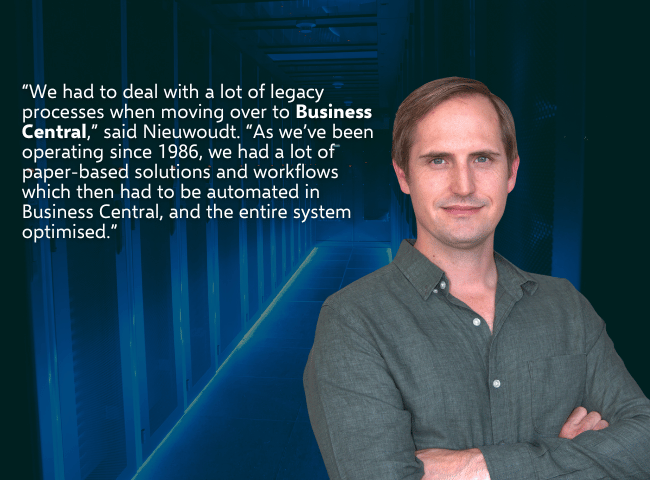Navigating the Cloudscape
In the ever-evolving landscape of digitisation, its medium-sized businesses who find themselves at a crossroads, contemplating the best strategy to embrace the cloud. While the allure of the cloud is undeniable, the reluctance to relinquish control over vital data and systems remains a valid concern. Today, let’s explore the early adoption reasons for a hybrid cloud strategy, dissecting the benefits that beckon businesses across diverse industries.
Understanding the Hesitation:
Moving all critical operations to the cloud can be a daunting prospect, especially for businesses with a legacy of on-premises infrastructure. Concerns about data security, compliance and the potential disruption of established workflows loom large in the mind of decision-makers. Recognising these hesitations is the first step towards crafting a nuanced hybrid cloud strategy.
Exchange Rate Challenges:
Medium-sized businesses operating in non-US Dollar countries often face the challenge of fluctuating exchange rates. Cloud service providers typically price their offerings in US Dollars, making the costs susceptible to currency volatility. This can lead to monthly or yearly budget uncertainties and make long-term budgeting a complex task, contributing to the hesitation in fully embracing cloud services.
Licensing Costs:
The licensing fees associated with cloud services can vary based on geographical regions and licensing models. For businesses in non-US Dollar countries, the cost of acquiring licenses to use cloud services can sometimes be higher due to exchange rate fluctuations. This financial uncertainty becomes a pivotal factor in the decision-making process, particularly when evaluating the feasibility of a full-scale migration.
Testing the Waters
Enter the hybrid cloud – a bridge between the familiar on-premises environment and the vast possibilities of the cloud. Medium-sized businesses can dip their toes into the cloud waters by selectively migrating certain systems, creating a low-risk testing ground. This approach allows for a seamless integration of cloud capabilities without the fear of a complete overhaul.
- Operational Resilience: By distributing workloads between on-premises and cloud environments, organisations can ensure business continuity even in the face of unexpected events, such as outages or disasters.
- Scalability Without Commitment: Hybrid cloud provides businesses with the flexibility to scale resources up or down based on demand without committing fully to a cloud-centric model. This scalability allows for efficient resource utilisation, preventing over-provisioning and unnecessary expenses.
- Efficient Resource Allocation: During the testing phase of a hybrid model, businesses can gain insights into the actual resource needs of specific workloads. This understanding enables more efficient resource allocation, preventing unnecessary spending on underutilised cloud services.
2 scenarios where Hybrid Cloud can be applied in 2 different business sectors.


Healthcare Industry A mid-sized healthcare provider, balancing stringent security and compliance requirements, needed scalable resources for data analysis. By adopting a hybrid cloud, they stored sensitive patient records on-premise and used cloud-based tools for research, complying with HIPAA regulations.
Retail Sector Consider a medium-sized retail company facing difficulties managing online traffic surges during peak seasons. By employing a hybrid cloud solution, they utilised cloud resources for scalability during high demand, while maintaining core data on-premise, improving website performance and data security.
Early Adoption Reasons:
Cost Optimisation: Hybrid cloud empowers businesses to scale resources based on demand, optimising costs without compromising performance. This flexibility is particularly beneficial for medium-sized enterprises seeking efficiency without extravagant expenditures.
Flexibility and Agility: Hybrid cloud models provide the agility to adapt to changing business needs. By maintaining essential functions on-premises and utilizing the cloud for scalable or temporary requirements, businesses can pivot swiftly in response to market dynamics.
Enhanced Security Measures: Security concerns often top the list of reasons for hesitating to fully embrace the cloud. A hybrid approach allows businesses to retain sensitive data on-premises while leveraging the advanced security features offered by reputable cloud providers.
Disaster Recovery and Business Continuity: With a hybrid cloud setup, businesses can design robust disaster recovery and business continuity plans. In the event of an unforeseen disruption, critical systems can seamlessly transition to the cloud, ensuring minimal downtime.
Looking Ahead
This blog merely scratches the surface of the vast potential that a hybrid cloud strategy holds for medium-sized businesses. In future instalments, we will delve deeper into the intricacies of optimising workflows, exploring advanced cloud services, and unlocking the full potential of a hybrid infrastructure.
As medium-sized businesses navigate the complex cloudscape, adopting a hybrid strategy emerges as a pragmatic choice. By understanding and addressing the hesitation associated with full-scale migration, businesses can strategically embrace the cloud, unlocking new possibilities for growth and innovation. Stay tuned as we unravel the layers of hybrid cloud adoption in upcoming blogs, guiding businesses towards a future-ready digital landscape.








